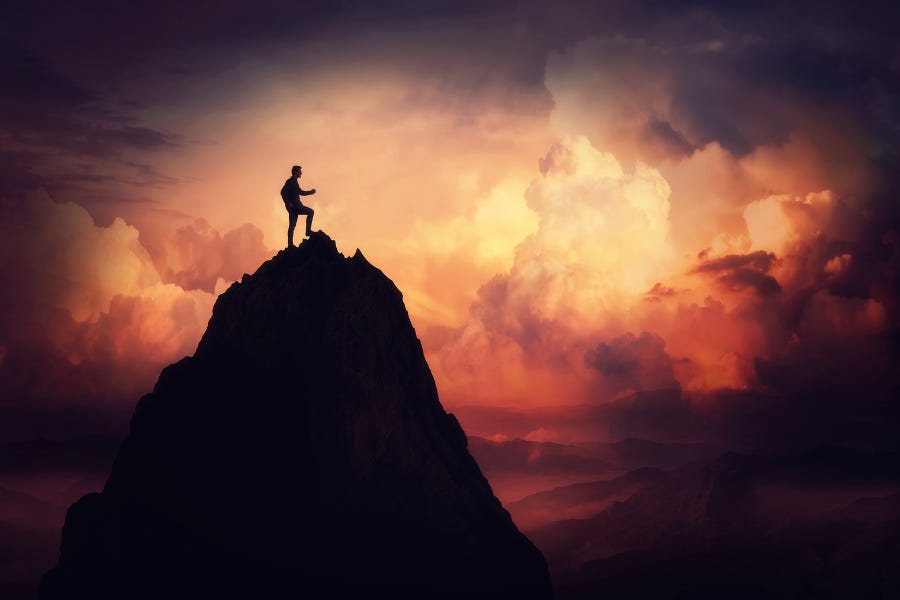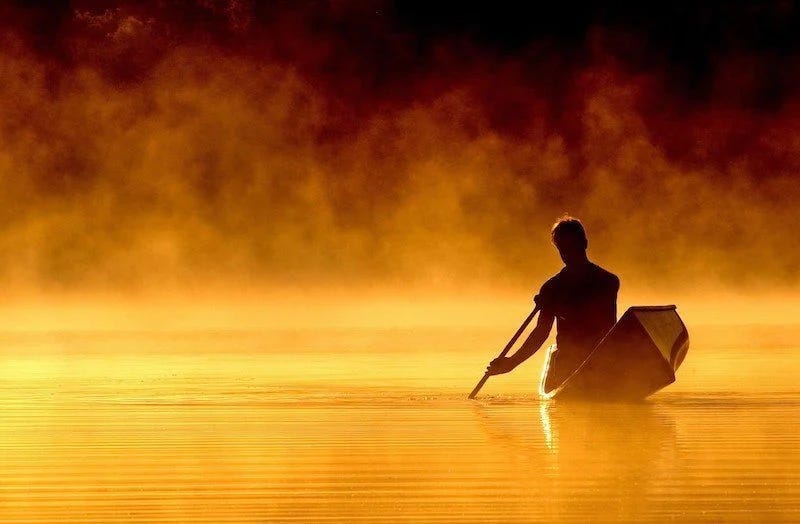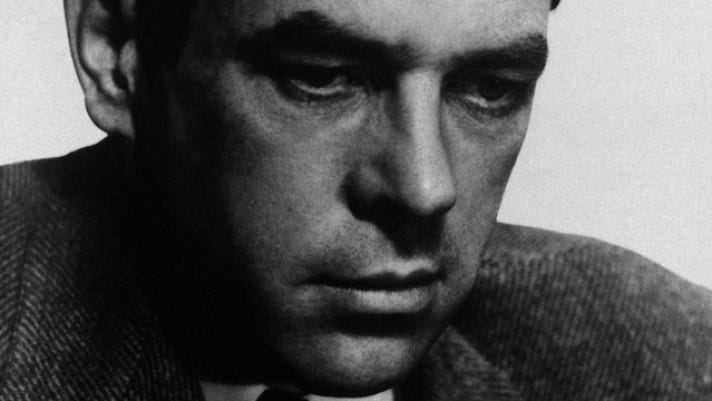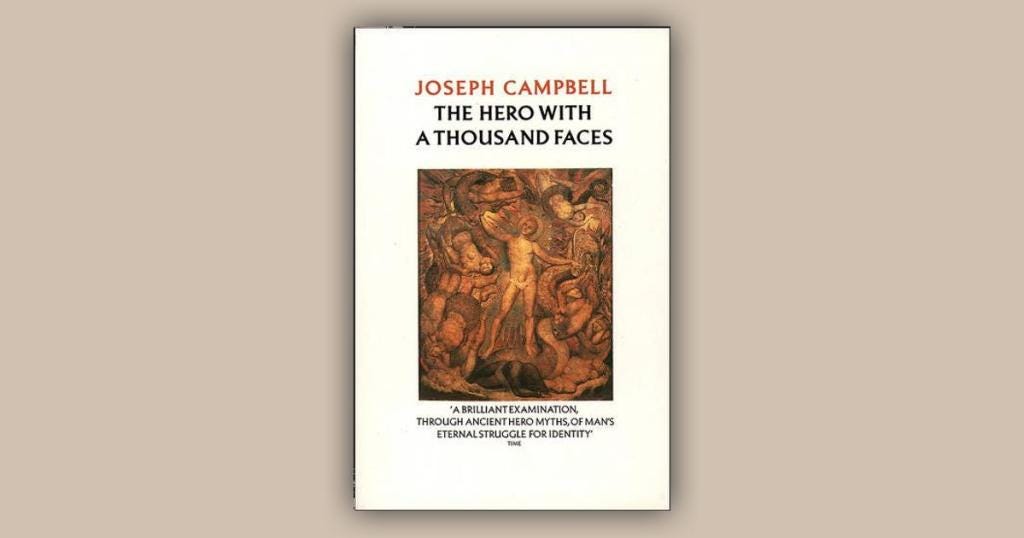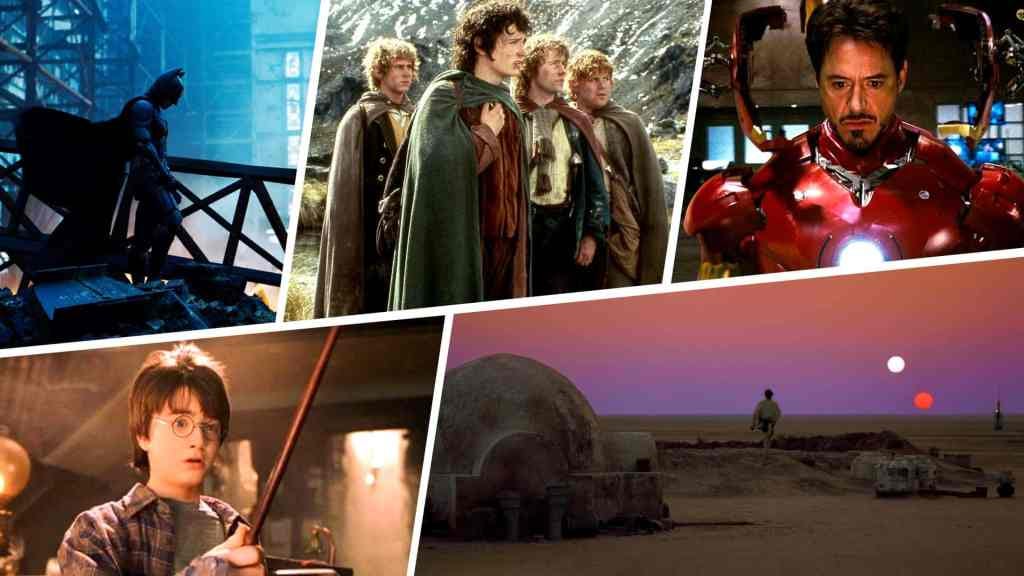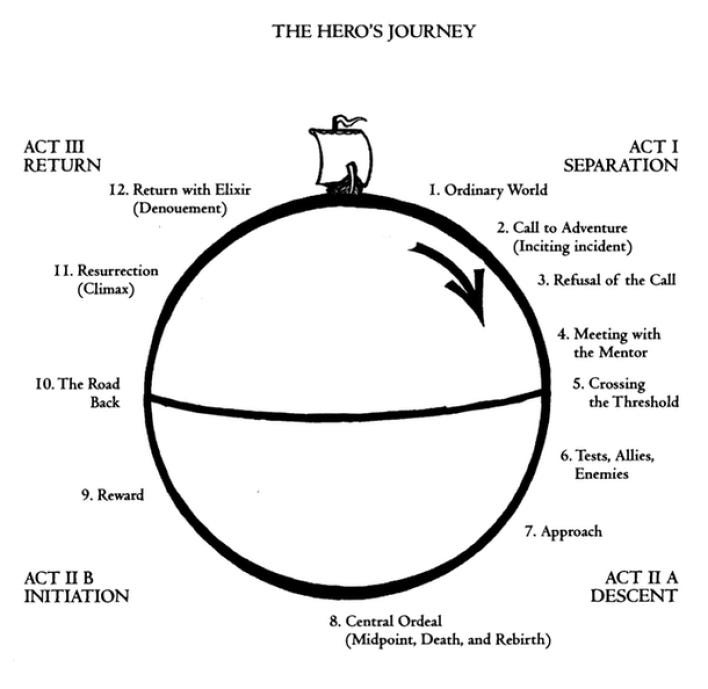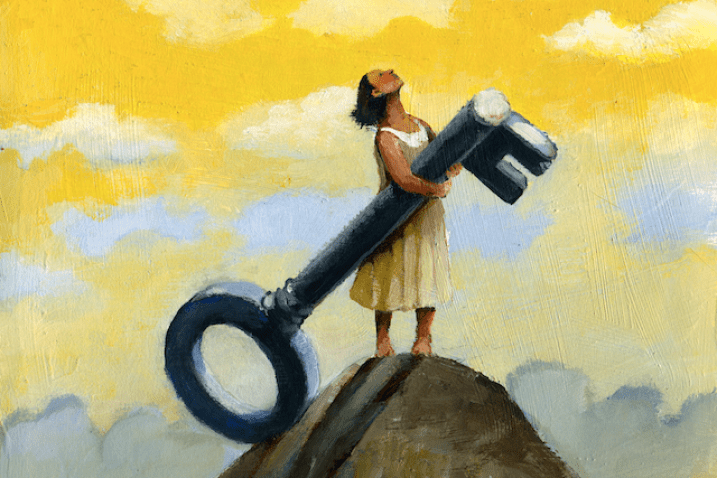Human beings are universally drawn to the story of the hero, a common psychological archetype that is found embedded in the fabric of almost every popular story or tale.
On a personal level, this framework can help one appreciate that personal change and difficulty can be positive forces that lead to deeper self-knowledge, awareness and transformation.
This is a membership piece from one of Australia's most unique websites, TOTT NEWS, and is republished here with their kind permission. They take a look at the Monomyth Archetype, including an overview of Joseph Campbell's famous book The Hero with a Thousand Faces, common themes found in popular media, Carl Jung and the unconscious mind, strength through suffering, slaying the dragon and more.
On this website, we have explored some pretty heavy topics in the last few years.
Through this process, focuses of self-development and improvement have been included — from sharpening critical thinking skills to help process information, understanding how to analyse real dangers in the world, and even more deeper theosophical concepts — to assist in dealing with great transition in the world.
Following the blueprint of Truman, our caterpillar-like transmutation has allowed us to see beyond the veils of deceptions in this realm, providing us with the tools to combat a world full of darkness.
Learning how to process our journey in this life is a vital tool to ensuring we prosper through times of change.
Continuing with this trend, this piece will take a look at aspects of the personal journey from a more individual perspective, and link previous work on the subconscious brain and archetypes to form a larger picture.
THE MONOMYTH
We have previously explored the ‘Monolith‘, but this month, we shift to take a look at what is known as the ‘Monomyth’. By the end of this piece, you will see connections between both the macro and micro concepts.
‘What is the Monomyth’, you ask?
To explore this question, we begin with the man who coined the term, American author Joseph Campbell.
Campbell is best known for his work in the field of comparative mythology. In his book, The Hero With A Thousand Faces, he combines modern psychology with this type of analysis.
Campbell popularised the idea of the “Monomyth”, which has become now known as the ‘Hero’s Journey’.
The Monomyth can be thought of as a template, or a structure, for a broad category of tale. This template is usually expressed in storytelling — whether it be book, film or others.
In his lifelong research, Campbell discovered many patterns run through myths and stories from all across the world. From cinema, to TV, to oral tradition, and more. All formed similar structures.
To find this, Campbell began to map out several basic stages that almost every hero-quest goes through — no matter what culture the myth is part of.
He found that this re-occurring model serves as a blueprint for many of our popular mythos.
Thus, the Monomyth is the commonality found in all hero stories. Stories that have stood the rest of time and have captivated for generations. Even to this day with modern forms of multimedia in a digital sphere.
In his work, Campbell details an extended framework that begins with a phase of freedom and innocence. One that is tragically disrupted by a crisis that sends our hero into exile, before a call arises them to face their fears.
We too, on our journeys of enlightenment, must do the same.
A JOURNEY DEFINED
So just what is the formula that Campbell laid out with his research?
Let’s explore the basic (and original) structure.
For heroes to begin their journeys in all stories, they must be called away from the ordinary world.
Fantastic quests don’t happen in every day life, so heroes must be removed from their typical environment.
At first, things starts to seems strange; a little off.
From this point, usually there is a discovery, some event or some danger, that starts them on the heroic path.
In some cases, heroes happen upon their quest by in almost inconceivable moments. Campbell puts it like this:
“A blunder — the merest chance — reveals an unsuspected world.”
Most heroes show a reluctance to leave their home, their friends and their life, to journey on a quest.
But in the end, they accept their destiny.
At this point, the ‘new world’ the hero is forced into is much different world than the old one.
After long searching, heroes tend to find a mystic object or discover their world is in danger.
True dangers, not the manufactured ones, as we have explored.
Campbell describes this new world as:
“A fateful region of both treasure and danger…a distant land, a forest, a kingdom underground, beneath the waves, or above the sky, a secret island, lofty mountaintop, or profound dream state…”
It is at this point that the hero is faced with a grave threat, either internal or external, to overcome.
Once overcoming the dangers, the hero must also come full circle — back to his or her community with new found gifts and capacities.
After relying upon naïve childlike fantasies, the hero become a mature adult capable of holding complex feelings and ideas in a world that can cause harm.
Eventually, the hero becomes a leader, healer, or guide for others.
This is the common theme found in all major works of our time.
The re-occurring story that captivates us time-and-time over again with different coats of paint.
Elements of The Hero’s Journey can be found in some of the greatest and oldest stories for good reason.
The narrative addresses many fundamental embedded traits that humans are drawn towards.
Those that unravelling the threads which weave the veil of mental darkness; a dark veil which covers our inner-light. Through a consistent practice, catch a glimpse of or even access, what is underneath.
Why in the world are we so attracted to this narrative of heroism?
Well, the reason is because the story itself is also embedded in us, and is something we should strive to be.
Like the hero of the screen or page, we also share powerful similarities deep inside of us.
Our own hero. Our own powerful archetype.
JUNG’S ARCHETYPES
Have you ever wondered why hero’s grip us so much?
Or why we all stay so attentive to the stories of whatever genre we like?
This is because, far beyond the mythos being embedded in the fabric of great tales, it is also a framework that can be found in our own personal journeys as well.
As such, there’s a much deeper storytelling blueprint to share — one that can inspire and empower radical transformation in the form of social innovation.
To explore this, we once again turn to Carl Jung.
A man who, in a different way, first identified this framework in both the individual and the collective.
While Campbell’s life work was devoted to sharing the life principles embedded in the structure of stories, Jung first suggested that the archetypes that appear in all myths and dreams represent the universal aspects of the human mind.
Through this, we can identify various stages that may be identifiable in our lives — stages that do not necessarily present themselves in a linear fashion, but in such a way that most individuals can see the similarities between myths and personal life events.
And it makes sense if you think about it.
With the previous section of the Hero’s template in mind, can you see the similarities with your personal life?
On this journey, we have all been exposed to some event or some danger that has started us on the heroic path.
Each of us have experienced this moment.
Can you remember a time when you ‘woke up’? Was it 9/11? The more recent 3/11?
Whatever has happened, we all can recall a moment where our previous self ceased to exist and a new-and-improved version of ourselves rose from the ashes of this revelation.
Could it be that we are on unknowingly on our own Hero’s Journey?
Could this ‘new self’ be what Jung described as the dormant ‘unconscious self’ manifesting to the surface?
“The hero symbolizes a man’s unconscious self, and this manifests itself empirically as the sum total of all archetypes and therefore includes the archetype of the father and of the wise old man.
To that extent the hero is his own father and his own begetter.”
The term Self, in the framework of Jungian psychology (Campbell being heavily inspired by Jung), is the integration of the conscious and unconscious under an all-encompassing term known as the psyche.
In The Archetypes and the Collective Unconscious, Jung describes this hidden realm of the mind:
“This personal unconscious rests upon a deeper layer, which does not derive from personal experience and is not a personal acquisition, but is inborn. This deeper layer I call the collective unconscious. I have chosen the term “collective” because this part of the unconscious is not individual, but universal…”
In the process of individuation, the heroic task is therefore viewed as the assimilation of the unconscious contents of our lives, as opposed to being overwhelmed by them.
The potential result is the release of energy that has been tied up with unconscious complexes.
“The hero myth is an unconscious drama seen only in projection, like the happenings in Plato’s parable of the cave.”
Furthermore, a conception of transformative learning that suitably underpins The Hero’s Journey is one that synthesises the cognitive-rational, the constructivist-developmental and the extrarational interpretations of transformative learning theory.
Christopher Vogler’s book, The Writer’s Journey: Mythic Structure for Writers, draws from both the psychology of Carl Jung and the mythic studies of Joseph Campbell.
Vogler draws parallels between both the real world and the personal, describing how this “drama” is often typified by confusion, uncertainty and challenge — as the learner leaves the comfort zone of the known, crosses thresholds and encounters trials as they are challenged to ‘unlearn’ old habits.
The past must be deconstructed before the learner can reconstruct the future. And once the future is reached, the learning can be said to have been truly transformative.
The greater the repertoire you have and understanding of your archetypes and what you need in your world to execute to peak performance, the more you’re going to rule your world.
But there are some things you must overcome first.
THE SHADOW AND THE DRAGON
“The Dark Wood”, as it was known in the ancient stories, is where heroes fought dragons and monsters.
In modern stories – as in our lives – heroes and heroines often face internal dragons, fears and rejected parts of themselves, and integrate them as they grow towards more wholeness, self-acceptance and inner peace.
In our lives, we all have the opportunity to move through a major obstacle or fear that stands in the way of fulfilling your intention for the journey. It’s how you deal with these obstacles that is the key.
The process of awakening, just like the Monomyth, the Hero Archetype and The Dark Wood, is all about death and rebirth, meeting the shadow, going to the depths and harvesting in the dark.
We must learn to conquer the erratic and emotionally charged personal experiences in our lives, that be evoked when new knowledge challenges old ways of knowing and being, taking the learner to an unknown space.
“The hero’s main feat is to overcome the monster of darkness: it is the long-hoped-for and expected triumph of consciousness over the unconscious.”
You can think of the Hero’s journey as shadow work.
Shadow is a term also first introduced by Jung to describe the repressed parts of the self.
Jung contends that if an individual can attend to the shadow, it can give them access to the “disowned” parts of themselves that one might find too risky to bring out into the world.
“In myths the hero is the one who conquers the dragon, not the one who is devoured by it.”
So how does one begin to confront their own shadows? How do they even know what they are?
To begin, the first place one should look is the realms in their lives that cause fear and anxiety.
By learning to challenge embedded dragons that exist in our psyche, the process starts to snowball.
The great thing is: when you voluntarily take steps towards slaying your dragon, a completely different physiological system takes over, one that is equipped to see difficulties as challenges with rewards, as opposed to the fight or flight system where you are forced to deal with something you’d rather avoid.
This enables you to approach your call with spirit and bravery, as opposed to feeling like a victim who is stuck and withdraws from the challenge. According to Jung:
“He is no hero who never met the dragon, or who, if he once saw it, declared afterwards that he saw nothing. Equally, only one who has risked the fight with the dragon and is not overcome by it wins the hoard, the “treasure hard to attain.”
He alone has a genuine claim to self-confidence, for he has faced the dark ground of his self and thereby has gained himself. … He has acquired the right to believe that he will be able to overcome all future threats by the same means.”
You will hear notions from many ‘new age’ and ‘spiritual’ movements to concentrate on the ‘infinite light’, to not address negativity at all. But this is not a way to true transformation in one’s life.
Humans, especially those reading this piece right now, should constantly be looking for areas they are scared or afraid and learning how to confront these concepts head on.
It may be scary, yes. It may be difficult, yes.
But the transformation – both on a psyche level and cellular – fundamentally ends up beneficial when one does.
Even trauma itself can be considered a necessary element of this process.
They want to somatise our trauma.
A perpetual cycle with no progression or true healing.
We need to use our trauma as a fuel to launch us beyond our previous expectations and boundaries.
STRENGTH THROUGH SUFFERING
Meaning making is a very personal process. In other words, there is no universal meaning that is generalisable to all people or situations. The more difficult the challenge, the harder you will have to work to find your inner strength, courage and sense of hope.
Successful navigation of your Hero’s Journey can provide you with a sense of purpose.
Without purpose, it is easy to feel lost or to feel caught up in the superficial distractions of life.
To be aligned with purpose helps you to steer your life in a meaningful direction. However, we can only grow from our challenges or derive meaning about our suffering by committing ourselves consciously to that task.
Psychiatrist Viktor Frankl offers an important perspective about making meaning after traumatic experiences.
In his influential book, Man’s Search for Meaning, Frankl suggests that trauma asks us to come to terms with the lack of reason or overpowering senselessness that often surrounds us in the world.
It can feel nearly impossible to comprehend such events, especially when they are delivered by fellow humans.
However, this is the task set before us: To reflect upon our unique traumatic events or losses and discover that which helps us derive a sense of meaning out of our own suffering.
Frankl guides the meaning making process by reminding us that we have the freedom to choose how we respond to our circumstances.
It is in the power of your beliefs and attitudes that gives you the freedom to reflect on the meaning that you attribute to your life.
Philosophically and theoretically informed by Jungian psychology, and based on extensive mythology research, the Hero’s Journey reflects an inclusive conception of transformative learning theory.
One that focuses on the centrality of emotion in the personal transformation experience.
This involves a quest to determine your own values, to ask this key question:
What is important to me and why it is so precious?
Through critical self- reflection, The Hero’s Journey provides a framework that guides individuals in understanding that significant personal growth and transformation are often accompanied by challenge and tension, but often the greater the challenge, the more significant the personal fulfilment and self-growth.
We are hardwired to face challenges and adversity, not sit around and do nothing.
Think about it: When have you felt your best? Was it after accomplishing or fighting through something difficult? Or was it after you just finished sitting around/avoiding something.
If you are able to get a sense of your suffering and your pain as something you can carry with nobility, the call to adventure becomes a load that you can carry, because you understand that with life comes beauty and tragedy, and your tragedy is your responsibility to own, respond to, and best of all, do something about.
This is how we confront the shadow and slay our own dragon.
Facing your deepest fears will change you. The old you is no more, and there is now an internal shift in how you see yourself and the world. The new you is more authentic and aligned with your purpose.
This doesn’t mean that challenges suddenly ‘end’. Or that times won’t be tough moving forward.
It simply means that you are best prepared for when the next dragon arises to take its predecessors spot, and in confronting this new shadow, you will continue to break new groups and previous paradigms.
It almost seems as if we are being ‘challenged’ in a way.
I think you might be beginning to see what I’m ‘getting at’ here.
BECOME YOUR ARCHITECT
As Carl Jung once said: “The gold is in the dark”.
In meeting our greatest challenges and fears, we have the chance to find our greatest gifts in them.
The gift might be a new perception, understanding or clarity, an inner shift, or more love and acceptance for yourself. Part of you has died and something new has been born – the reward from facing that death.
Many of you have likely already experienced this moment.
This piece was designed to conceptualise — outside of the Dante’s theological perspective or Truman’s quest to escape the lie system — just what this experience represents on an individual level.
The more challenges and chaos we face, the further along our path we are taken.
When things get tough, you must remember your relation to this micro and macro Hero’s Journey archetype.
As Buckminster Fuller eloquently said, “we are called to be architects of the future, not its victims.”
We must expel the victimhood mentality that plagues this reality in which we live.
You WERE BUILT to tackle these challenges head on. To explore the unknown. To manifest.
In fact, as we have explored, we may all be the pawns in a larger game of initiation.
To embody this truth, we must recognise the wisdom to change things, and we can’t spend too time fighting the existing reality. Instead, we focus energy on building new models that make the old one obsolete.
I invite you to use the following questions as prompts for personal journaling about trauma recovery:
What events in your life have served as a calling to enter a Hero’s Journey?
Have you had previous experiences where you discovered that you are stronger than you previously realised. If so, what did you learn about yourself in the process?
Have you noticed a desire to reject the call to be the hero of your life? If so, what helps you build confidence in your ability to rise up to challenge? What resources do you need to help you navigate?
Are you aware of any strengths that you have discovered as a result of difficult life experiences? Have any of these events resulted in positive changes in your path in any way? Have they influenced a sense of purpose to your life?
Do you feel as though you have a sense of meaning in your life? Do you feel unresolved in regards to a sense of meaning or purpose in your life?
There are no correct answers to these questions.
Listening to your inner voice is what is most important in this process.
We are all characters in the great Book of Life.
And although we cannot control the greater narrative, we do have the power to write just who we want to be and how we want to be remembered when this story is all said and done.
Will you choose to write yourself as the Hero or the Victim?
The choice is yours. Don’t ignore the callings to seize your destiny.





